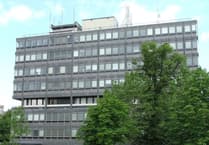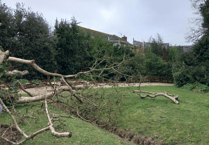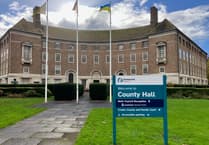A PROJECT to bring back red squirrels to Exmoor has been given a share of a £20 million Government fund to help launch it.
Red Squirrel South West wants to bring back the UK’s native squirrel species to a 35-mile coastal woodland corridor between Minehead and Ilfracombe.
But first the East Devon-based group, formed in 2008, needs to set up a ‘management programme’ for grey squirrels in the area to reduce their numbers.
It will involve culling the animals, which have decimated the red squirrel population since their introduction to the UK in 1876.
Project co-ordinator Mish Kennaway said the number of greys needed to be ‘drastically reduced’ before the native red species could be reintroduced and the woodlands regenerated.
The animals would be culled through methods such as shooting or trapping, while plans to trial the use of contraceptives as a control method were still years away.
Mr Kennaway said ancient oak woodlands were ‘going backwards’ because young saplings were being destroyed by the grey squirrels.
He said animals such as songbirds, dormice, and even bats were also threatened by the greys.
Mr Kennaway said: “Nobody likes killing grey squirrels or any other animals for the sake of it, and certainly conservationists do not, but we humans have put the imbalance in nature.
“In a way, we have a social responsibility to do something about that because our native species are literally dying out.”
Red Squirrel South West said that it is now looking for volunteers to help them to set up a group to control grey squirrel populations along the Exmoor coastline.
The Woodland Trust said grey squirrels were larger and faster breeding than reds and much more successful in competing for food.
They also carried squirrel pox, to which they were immune but red squirrels were not.
The funding from the Department for Environment Food and Rural Affairs has also been shared with local councils across the country and projects at Cambridge and Lincoln Universities as part of a wider Government 25-year environment plan to recover and restore nature, helping to reach carbon net zero by 2050.
It was intended to drive long-term woodland creation efforts, create jobs, boost biodiversity, and support innovative approaches to tree health and resilience in the face of climate change and the mounting threat of pests and diseases.
Forestry Minister Trudy Harrison said: “Our trees, forests and woodlands are the nation’s lungs, filtering our air, capturing carbon, providing habitats, and serving as a powerful weapon in the fight against climate change.
“At a local level, trees are the lifeblood of communities, essential to supporting wellbeing, beautifying our streets, and improving people’s quality of life while providing a safe haven for wildlife.”




